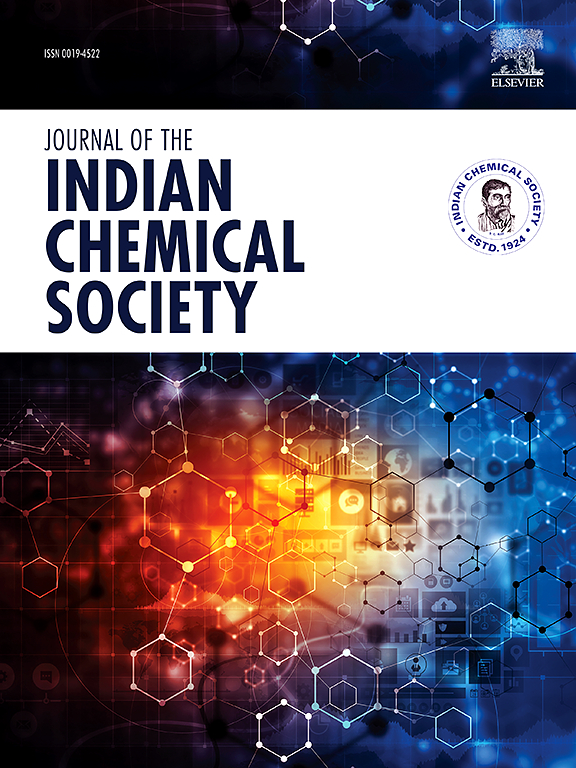Integrated sustainable enzymatic hydrolysis and fermentation pathways for enhanced PHA synthesis from oil palm fronds biomass
IF 3.2
4区 化学
Q2 CHEMISTRY, MULTIDISCIPLINARY
引用次数: 0
Abstract
This study aims to fine-tune the combination of pretreatment, enzymatic hydrolysis, and fermentation to improve the conversion of oil palm fronds (OPF) into polyhydroxyalkanoates (PHA). It is based on the premise that optimising the sequential stages of pretreatment, enzymatic hydrolysis, and microbial fermentation will enhance cellulose accessibility, glucose release, and PHA production from oil palm fronds, providing an efficient and economically viable alternative to non-biodegradable, petroleum-based plastics. The objectives are to investigate the effects of alkaline and bleaching pretreatments on lignin removal and cellulose-enrichment, to assess enzymatic hydrolysis efficiency under optimized conditions, and to compare the PHA production potential of Bacillus cereus and Escherichia coli using OPF-derived hydrolysates. OPF was pretreated at 40, 80, and 120 °C for 2, 4, and 6 h. The optimal condition, 120 °C for 4 h, yielded 89.07 % enriched cellulose and reduced lignin to 6.43 %. Enzymatic hydrolysis using Aspergillus niger cellulase for 48 h released 36.23 g/L of glucose. Fermentation results showed that Bacillus cereus produced the highest PHA yield of 54.46 % after four days. FTIR confirmed the presence of ester carbonyl groups characteristic of PHA, while UV–Vis and HPLC analyses were used to monitor lignin removal and glucose concentration. These findings demonstrate the feasibility of an integrated bioprocess for PHA production from OPF, with a clear interdependence between pretreatment severity, enzymatic efficiency, and microbial performance. This work supports the advancement of circular bioeconomy strategies and highlights OPF as a sustainable resource for bioplastic production with strong economic and environmental potential.
综合可持续酶解和发酵途径提高油棕叶生物量合成PHA
本研究旨在对预处理、酶解和发酵的组合进行微调,以提高油棕叶(OPF)转化为聚羟基烷酸酯(PHA)的效率。其前提是,优化预处理、酶解和微生物发酵的顺序阶段,将提高纤维素的可及性、葡萄糖的释放和油棕叶PHA的生产,为不可生物降解的石油基塑料提供一种高效且经济可行的替代方案。目的是研究碱性和漂白预处理对木质素去除和纤维素富集的影响,评估优化条件下的酶解效率,并比较蜡样芽孢杆菌和大肠杆菌使用opf衍生的水解物生产PHA的潜力。OPF分别在40、80和120℃条件下预处理2、4和6 h。最优条件为120℃预处理4 h,纤维素富集率为89.07%,木质素还原率为6.43%。用黑曲霉纤维素酶酶解48 h释放36.23 g/L葡萄糖。发酵结果表明,蜡样芽孢杆菌发酵4天后PHA产量最高,达54.46%。FTIR证实了PHA特有的酯羰基的存在,而UV-Vis和HPLC分析用于监测木质素去除和葡萄糖浓度。这些发现证明了从OPF生产PHA的综合生物工艺的可行性,预处理程度、酶效率和微生物性能之间存在明显的相互依存关系。这项工作支持了循环生物经济战略的推进,并突出了OPF作为生物塑料生产的可持续资源,具有强大的经济和环境潜力。
本文章由计算机程序翻译,如有差异,请以英文原文为准。
求助全文
约1分钟内获得全文
求助全文
来源期刊
CiteScore
3.50
自引率
7.70%
发文量
492
审稿时长
3-8 weeks
期刊介绍:
The Journal of the Indian Chemical Society publishes original, fundamental, theorical, experimental research work of highest quality in all areas of chemistry, biochemistry, medicinal chemistry, electrochemistry, agrochemistry, chemical engineering and technology, food chemistry, environmental chemistry, etc.

 求助内容:
求助内容: 应助结果提醒方式:
应助结果提醒方式:


